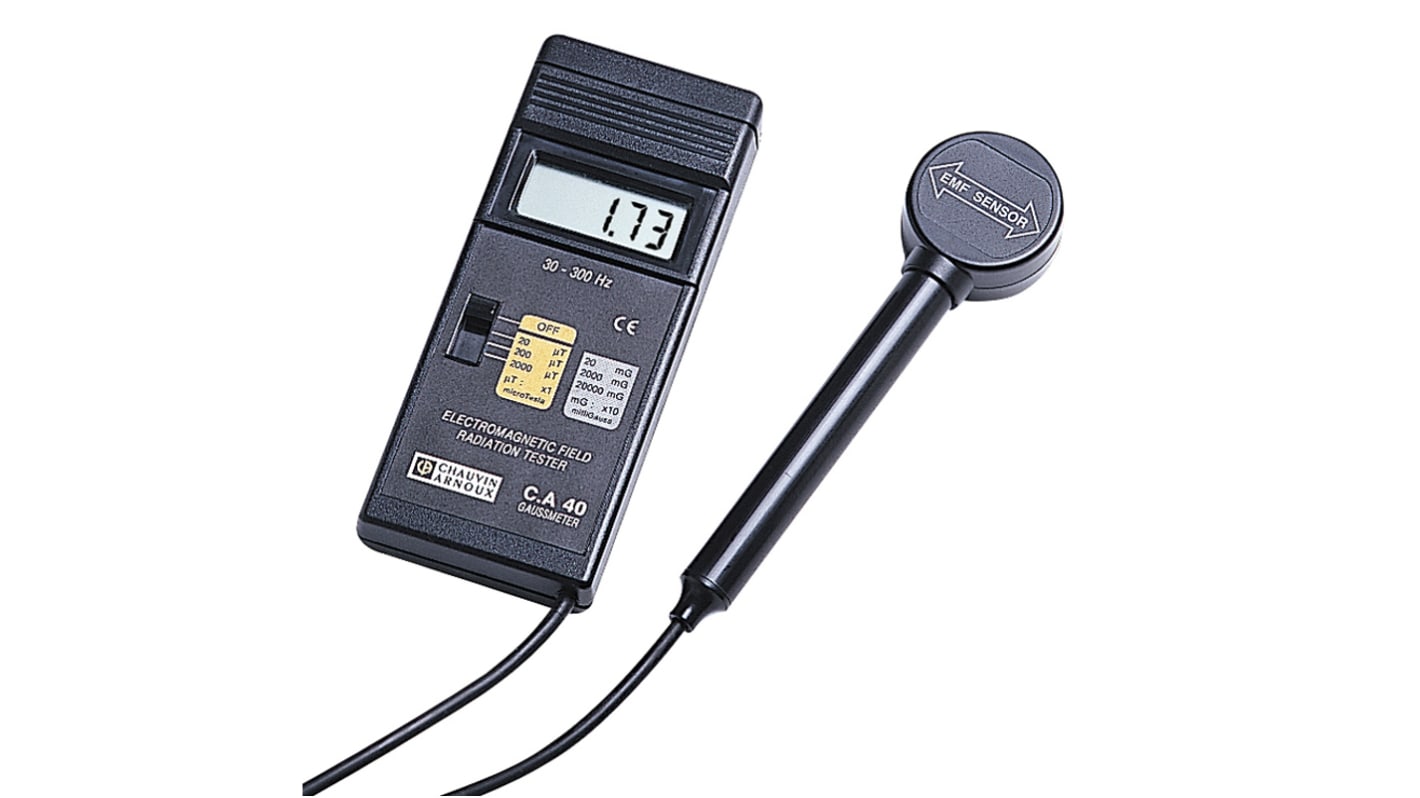Chauvin Arnoux P01167501 Gauss Meter, 30 → 300Hz
- RS Stock No.:
- 293-1669
- Mfr. Part No.:
- P01167501
- Brand:
- Chauvin Arnoux

Subtotal (1 unit)*
£589.14
(exc. VAT)
£706.97
(inc. VAT)
FREE delivery for orders over £50.00
In Stock
- 2 unit(s) ready to ship from another location
Need more? Click ‘Check delivery dates’ to find extra stock and lead times.
Units | Per unit |
|---|---|
| 1 + | £589.14 |
*price indicative
- RS Stock No.:
- 293-1669
- Mfr. Part No.:
- P01167501
- Brand:
- Chauvin Arnoux
Specifications
Technical Reference
Legislation and Compliance
Product Details
Find similar products by selecting one or more attributes.
Select all | Attribute | Value |
|---|---|---|
| Brand | Chauvin Arnoux | |
| Magnetic Range | 20 → 2000 μT | |
| Maximum Magnetic Measurement | 2000µT | |
| Minimum Magnetic Measurement | 20µT | |
| Best Accuracy | ±4% + 3 Digits | |
| Resolution | 0.01 μT | |
| Frequency Range | 30 → 300Hz | |
| Operating Units | Gauss, Tesla | |
| Length | 163mm | |
| Width | 68mm | |
| Weight | 285g | |
| Dimensions | 163 x 68 x 24mm | |
| Model Number p | CA 40 | |
| Height | 24mm | |
| Select all | ||
|---|---|---|
Brand Chauvin Arnoux | ||
Magnetic Range 20 → 2000 μT | ||
Maximum Magnetic Measurement 2000µT | ||
Minimum Magnetic Measurement 20µT | ||
Best Accuracy ±4% + 3 Digits | ||
Resolution 0.01 μT | ||
Frequency Range 30 → 300Hz | ||
Operating Units Gauss, Tesla | ||
Length 163mm | ||
Width 68mm | ||
Weight 285g | ||
Dimensions 163 x 68 x 24mm | ||
Model Number p CA 40 | ||
Height 24mm | ||
RoHS Status: Exempt
- COO (Country of Origin):
- FR
Chauvin Arnoux CA40 Gauss Meter
Designed to measure the electromagnetic radiation levels the CA40 is designed for use on electrical current lines, home appliances and industrial equipment.
As a high-performance portable device, the design and calibration allow measurement of radiation on a base of 50//60 Hz. The probe is separated from the box for ease of use, making it user friendly and assisting with measurements in hard to reach areas.
Delivered in a hard case with 1 probe, a battery and user manual. (5 language user manual)
Dimensions: 163 X 68 X 24 mm
As a high-performance portable device, the design and calibration allow measurement of radiation on a base of 50//60 Hz. The probe is separated from the box for ease of use, making it user friendly and assisting with measurements in hard to reach areas.
Delivered in a hard case with 1 probe, a battery and user manual. (5 language user manual)
Dimensions: 163 X 68 X 24 mm
Features and Benefits:
• Battery operated
• 30 to 300 Hz
• Low-frequency magnetic fields measurement
• Easy to handle unidirectional probe
• 285g weight
• 30 to 300 Hz
• Low-frequency magnetic fields measurement
• Easy to handle unidirectional probe
• 285g weight
How Does a Gauss Meter Work?
Gaussmeters are a Hall probe, a test current is sent by the meter through the probe. This Hall affect produces a voltage and the meter then records this. Often the highest voltage detected is used or frozen by the meter as voltage fluctuation is common given that magnetic fields are rarely static.
Did you know?
Carl Friederich Gauss born in 1777 developed one of the first devices that could measure direction and strength of a magnetic field. He was a pioneer in this type of study and a great mathematician. He created the system used to measure magnetism and is the reason the modern unit of flux density is named Gauss and why we call these units Gauss meters.
Standards
IEC 1010-2 and EN 50081-1
